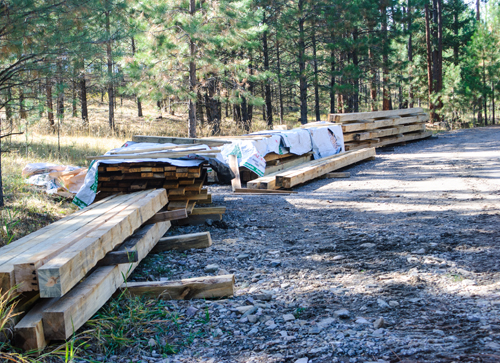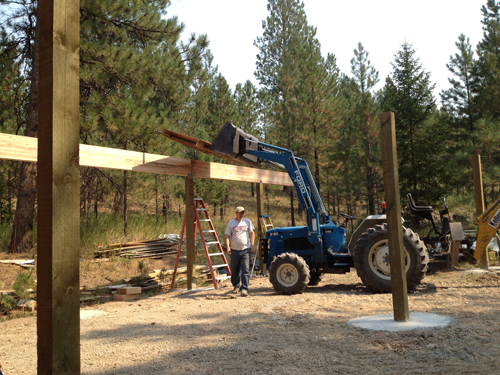The process of building a house is often destructive to the immediate environment.
It takes forethought and prevention (plus a firm conviction) to preserve the plants and habitat around your home from destruction by equipment and thoughtlessness.
If you want to rescue any of your native plants, dig up what you can and transplant them into containers or relocate them prior to breaking ground. Tap-rooted species can’t be transplanted without going to extremes but many fibrous rooted species can be easily moved. Replanting mature plants will shorten the time it takes to revegetate the area around your new home.
Once the soil is disturbed it is vulnerable to weeds.
Vigilance is your key to preventing wholesale weed invasion. Remove weeds as they appear. Try to prevent equipment that has been in weedy areas from working on site until it has been properly cleaned.
Once your native soil is compacted by equipment and foot traffic the complex microbial systems within it are unable to function and the soil is essentially dead. Compaction is your worst enemy. Keep contractors and equipment within bounds – they won’t like it, but do it! Most plants can’t grow in compacted soil. Roots can’t breathe in compacted soils.
Scraping off the topsoil to use it later usually kills whatever plants, seeds and micro-organisms are growing in it. That said, bringing in topsoil from somewhere else is always a bad idea – you are bringing in someone else’s weeds, so it’s best to use your own topsoil whenever possible – just know it will need rejuvenating to get it going again.
Protect your trees! Trees may be small now, but they will provide shade, wind protection and privacy for your home as they grow. Keep equipment from damaging them!
You chose to build your home in a spot that appeals to you. Protect that spot as much as possible!



Great commentary! We had our topsoil moved to protect what we could when they dug our daylight basement. The first pile they went to for filling behind the deepest wall was the topsoil! Luckily my husband was on watch and made them put it back. A small layer, even less than half an inch, goes so far in helping to return the land to what it was. We reshaped a hillside to direct a small gulley away from where we were building, then put a scattering of topsoil over that and raked in native bunch grasses. It has filled in amazingly well and I just need to wander through to take out the Russian Knapweed and a patch of Tumble Mustard in a couple areas. I also harvest the seeds around that meadow and scatter them in it to encourage more native flowers like Arrowleaf Balsamroot, Lupine, and Mariposa Lilies.
Preparation and defense first goes a long way and will save you a lot of grief! Below the house we never quite got around to covering where the septic field is with any topsoil though we did try to sow it with the same grasses. I am still battling the weeds there–the Lamb’s Quarters last year were as tall as me, and only a house wren seemed to love them. It didn’t help that when it was first planted I wanted to weed, but my husband snuck in with Roundup which took out any natives that were trying to compete. I have taken to throwing every seed head I cut from the natives I planted around the house down there to try and give those weeds more competition. Yarrow seems to be the most competitive.
We did manage to save the few shrubby trees around the edge and we are thanked by the birds that land there. Our Blue Elderberry seems to be a tree of life with its berries, camouflage and insects that attract them. However, we are pruning it further up the hill each year because of all the stuff it drops onto the patio.